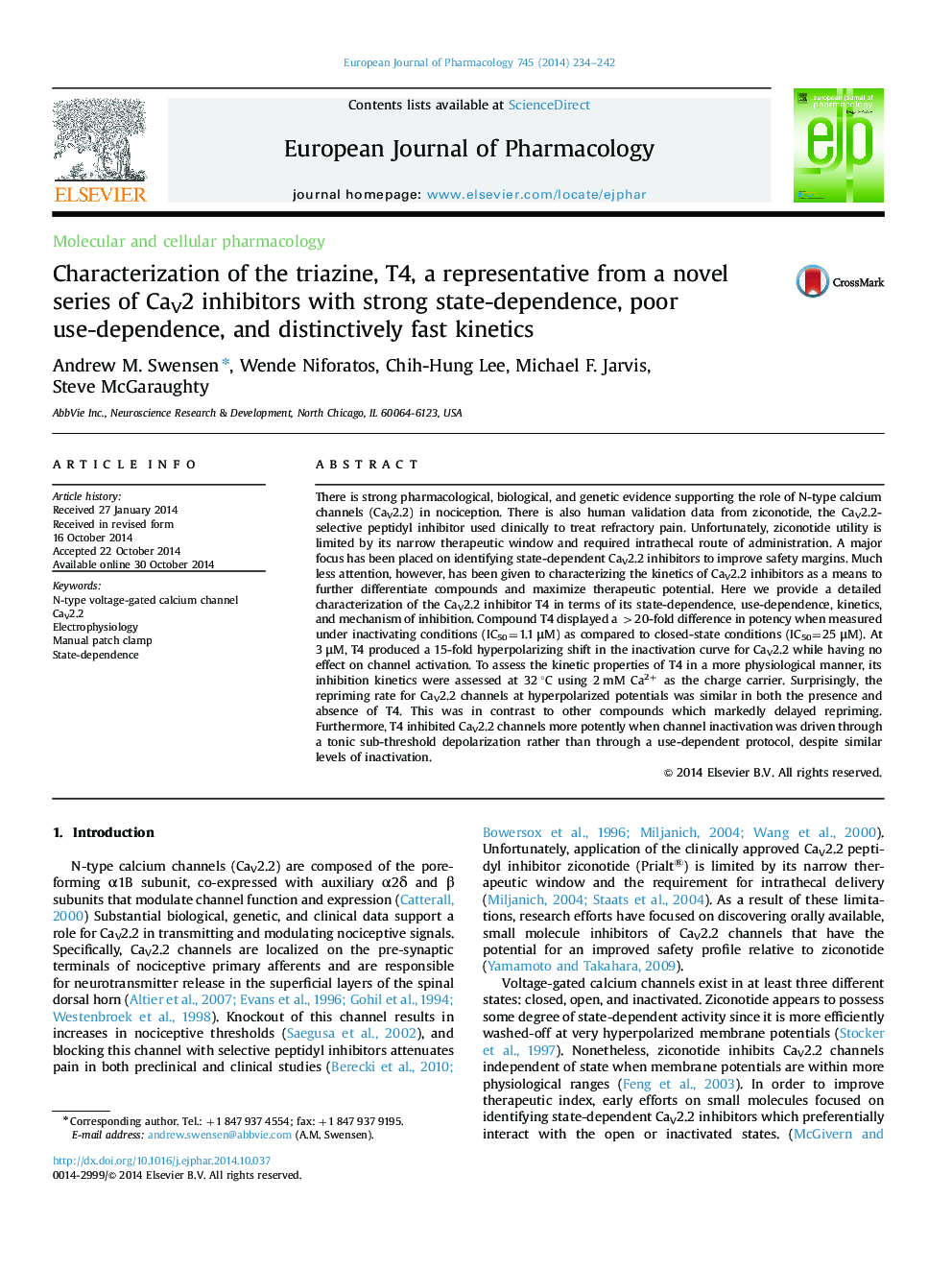| کد مقاله | کد نشریه | سال انتشار | مقاله انگلیسی | نسخه تمام متن |
|---|---|---|---|---|
| 5827690 | 1558936 | 2014 | 9 صفحه PDF | دانلود رایگان |
عنوان انگلیسی مقاله ISI
Characterization of the triazine, T4, a representative from a novel series of CaV2 inhibitors with strong state-dependence, poor use-dependence, and distinctively fast kinetics
دانلود مقاله + سفارش ترجمه
دانلود مقاله ISI انگلیسی
رایگان برای ایرانیان
موضوعات مرتبط
علوم زیستی و بیوفناوری
علم عصب شناسی
علوم اعصاب سلولی و مولکولی
پیش نمایش صفحه اول مقاله

چکیده انگلیسی
There is strong pharmacological, biological, and genetic evidence supporting the role of N-type calcium channels (CaV2.2) in nociception. There is also human validation data from ziconotide, the CaV2.2-selective peptidyl inhibitor used clinically to treat refractory pain. Unfortunately, ziconotide utility is limited by its narrow therapeutic window and required intrathecal route of administration. A major focus has been placed on identifying state-dependent CaV2.2 inhibitors to improve safety margins. Much less attention, however, has been given to characterizing the kinetics of CaV2.2 inhibitors as a means to further differentiate compounds and maximize therapeutic potential. Here we provide a detailed characterization of the CaV2.2 inhibitor T4 in terms of its state-dependence, use-dependence, kinetics, and mechanism of inhibition. Compound T4 displayed a >20-fold difference in potency when measured under inactivating conditions (IC50=1.1 μM) as compared to closed-state conditions (IC50=25 μM). At 3 μM, T4 produced a 15-fold hyperpolarizing shift in the inactivation curve for CaV2.2 while having no effect on channel activation. To assess the kinetic properties of T4 in a more physiological manner, its inhibition kinetics were assessed at 32 °C using 2 mM Ca2+ as the charge carrier. Surprisingly, the repriming rate for CaV2.2 channels at hyperpolarized potentials was similar in both the presence and absence of T4. This was in contrast to other compounds which markedly delayed repriming. Furthermore, T4 inhibited CaV2.2 channels more potently when channel inactivation was driven through a tonic sub-threshold depolarization rather than through a use-dependent protocol, despite similar levels of inactivation.
ناشر
Database: Elsevier - ScienceDirect (ساینس دایرکت)
Journal: European Journal of Pharmacology - Volume 745, 15 December 2014, Pages 234-242
Journal: European Journal of Pharmacology - Volume 745, 15 December 2014, Pages 234-242
نویسندگان
Andrew M. Swensen, Wende Niforatos, Chih-Hung Lee, Michael F. Jarvis, Steve McGaraughty,